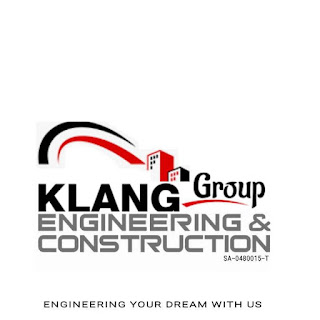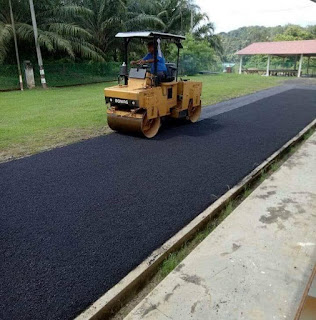PREMIX KONTRAKTOR KUALA LUMPUR CHEAPEST TAR WORKS
Every road leads to a different destination
The construction of a new road – whether from asphalt or concrete – requires the production of an excellently bonded pavement structure, beginning with a stable base layer and going all the way to a precisely levelled surface course.
What are the most important criteria to be considered? What methods need to be applied? What machines used?
The base course serves as a foundation for the paving. Depending on the stresses to be expected, the road comprises various layers of different thickness in order to withstand the most diverse weather conditions and remain serviceable for many decades. The bottom layer essentially comprises an unbound mixture of coarse and fine crushed stone, as well as crushed sand, to achieve the desired load-bearing capacity and absorb traffic loads so that the underlying subgrade is not deformed
Paving a hydraulically bound base layer. Precisely metered quantities of cement slurry are added via hose connections from the slurry mixer to the cold recycler.
In many cases, a bound base course is overlaid over the unbound base course. Bitumen, cement or lime is predominantly used as binder. Mixes containing bitumen are referred to as hot-paved or cold-paved asphalt base courses, depending on whether the mix is hot or cold. The base course is said to be hydraulically bound when cement or lime is used as binder.
Paving asphalt requires outstanding logistics. Care must always be taken to ensure that sufficient mix is available and that the material does not cool. Paver and roller form an irreplaceable team here.
The first person in the paving team, however, is the truck driver who fills the asphalt into the paver's hopper. Two mutually independent conveyors transport the material through the machine to the rear, where it is uniformly distributed between paver and screed by two individually controlled rotating screw conveyors. When paving a standard mix, the temperature should always remain above 110 °C in order to ensure sufficient time for compaction.
On modern pavers, the compacting systems in the screed can be actuated separately. Particularly the high compaction screeds achieve very good compaction. As a result, the rollers behind the paver require fewer passes to achieve the specified final degree of compaction.
Compaction of the asphalt pavement should yield a uniform surface with the greatest possible skid resistance and ensure that the individual asphalt courses are firmly and durably interlinked to produce high stability and wear resistance, as well as enduring evenness. Rollers or compactors reduce the number of voids. This makes the asphalt more resistant to stress and extends its durability.
Basically, compaction becomes more effective with increasing temperature of the paved mix. The most advantageous temperature range depends on the composition of the mix, the thickness of the pavement and the type of binder used.
The roller operator starts compaction at the tie-in points and follows the edge of the road from there. The pavement is pressed home in a further pass. Dynamic compaction is mainly used for the main compaction process. The drums vibrate horizontally (oscillate) or vertically (vibrate), thus significantly increasing the effect of compaction. The operation is completed by a final roller pass that will “iron out” any remaining irregularities in the asphalt pavement or surface to produce a perfect surface finish.
Concrete is a particularly durable material and eminently suitable for roads which have to withstand high loads. Slipform paving is a standard method that is primarily used to pave large roads and runways using inset technology.
First of all, trucks unload the concrete in front of the paver. The slipform paver then spreads the concrete over the full paving width with its auger or spreading plough and forms the concrete profile for the roadway with the slipform mould. HF vibrators inside the slipform vibrate at high frequency, expelling air from the concrete and hence compacting it.
At the same time, the paver can also insert dowel bars or tie bars in the fresh concrete. These bars reinforce the concrete. Slots are subsequently cut into the concrete pavement above the reinforcements. These slots ensure that the cracks which are invariably produced as a result of stresses and temperature fluctuations are diverted into the concrete pavement in a controlled manner.
The roadway is levelled by finishing beams and super-smoothers. An entrained piece of sackcloth often ensures a non-skid surface texture. A curing unit is normally used to apply a dispersion to the fresh concrete so that the concrete cures uniformly.
Road kerbs at puncak 7 shah alam.
Few places done by manual.
Edgings, protective barriers on the central reservation of motorways, gulleys to drain water - concrete can be moulded into many shapes. Such concrete profiles can be produced simply and economically using offset slipforming technology.
For offset slipforming, material is normally transferred to the filling hopper from a concrete mixer truck. This material is transferred to the offset slipform mounted on the side of the paver by either a pivotable conveyor belt or a pivotable screw conveyor. The slipform produces the monolithic profile as the offset paver moves forward. The range of possible shapes and sizes is immense, from such common shapes.
Offset applications extend from roadway edgings and crash barriers with a maximum height of 2 m to narrow paths. Offset paving is quick and efficient when compared to manual placement of prefabricated elements.











This is useful and well-thought out information with though. The provoking viewpoints and content. I can only aspire to write material like this. I am extremely impressed with your presentation of the sound points in this article. Thank you for writing this engaging content. The first two sentences encouraged me to read more. Thanks for posting this again.Ready Mix Concrete in London
ReplyDeleteGreat write-up. We mention this a lot during consultations at Sacramento Asphalt Sealing.
ReplyDeleteGreat insights on road construction techniques! Another option worth considering for projects that need flexibility and quality control is on site mix concrete, especially when you want to adjust the mix right on the job and save on transportation delays. If you’re looking for reliable concrete solutions for your build or roadwork, on-site mixing can be a smart choice — fresh, efficient, and tailored to your needs.
ReplyDelete